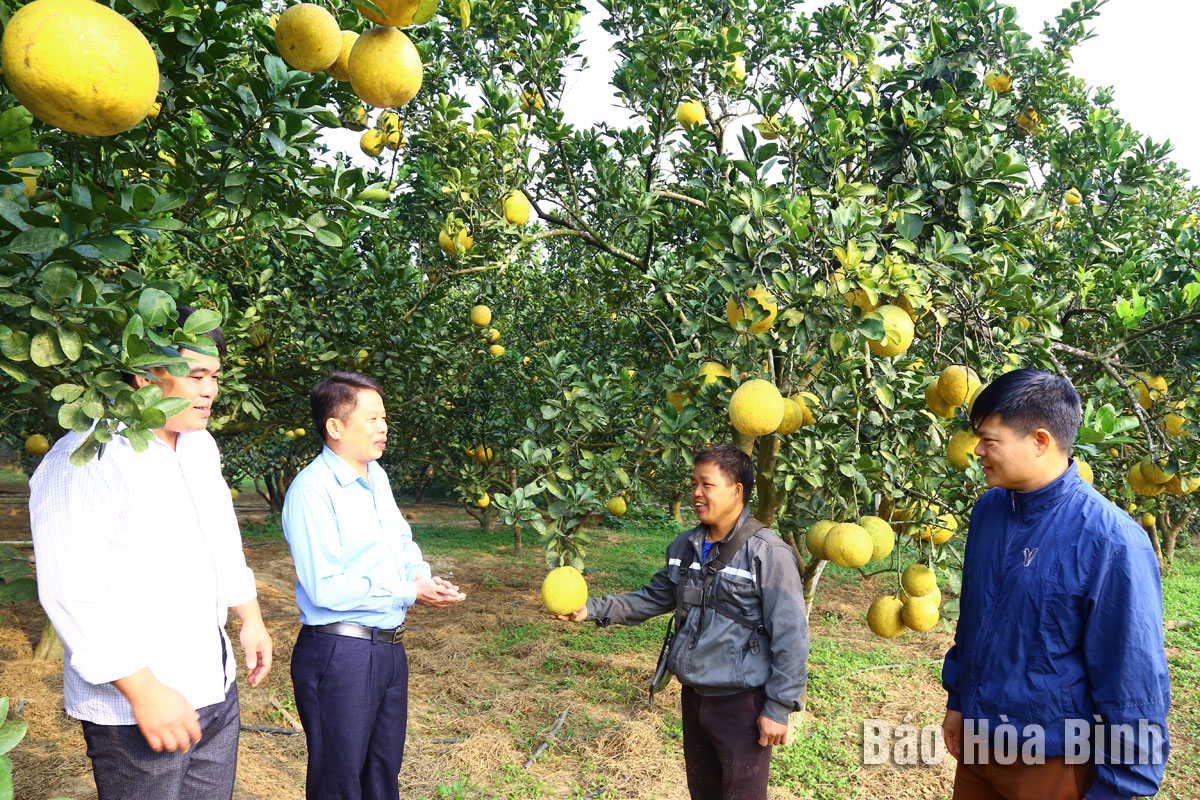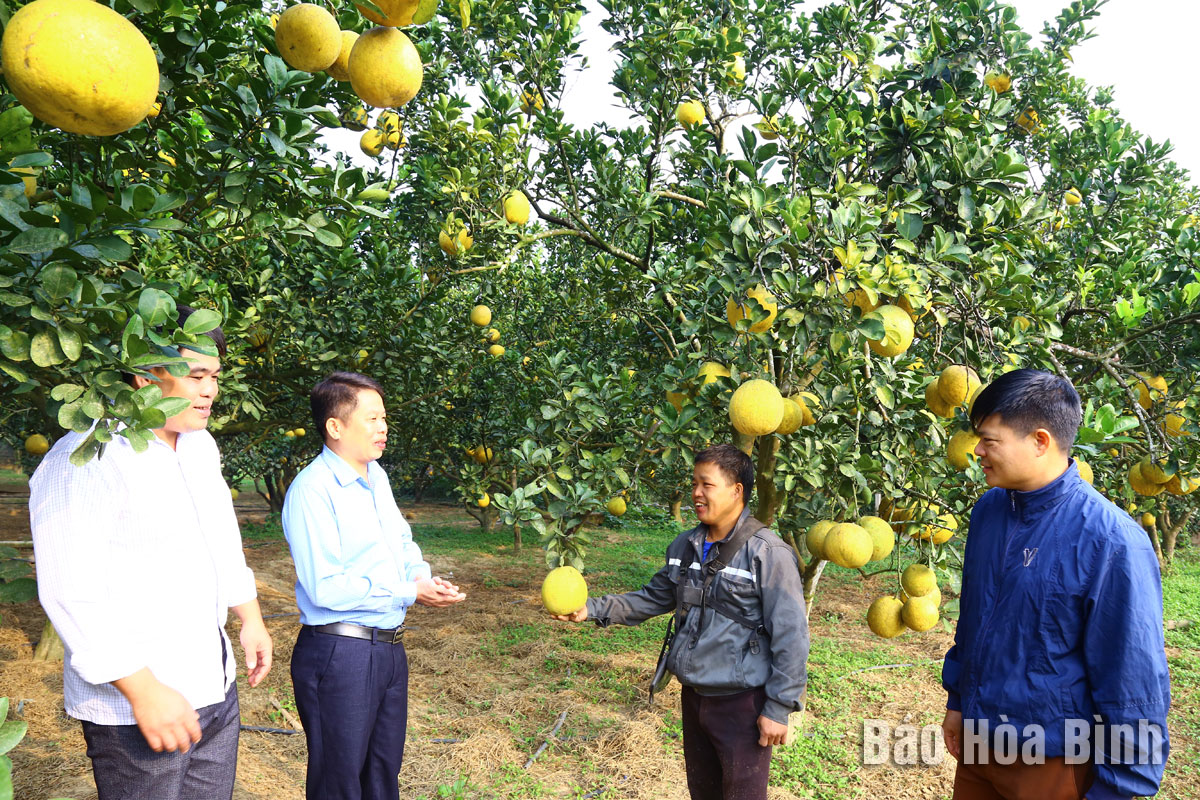



Officials of Dong Lai commune, Tan Lac district, visit a red-flesh grapefruit growing model of a local household in Dong Tam commune.
Since 2022, the district has exported 4,500 red grapefruits to the UK market. It has signed a contract to provide nine tonnes of the fruits for export with the RYB joint Stock Company in Hanoi. Products that meet export standards must satisfy strict requirements from planting, care and harvesting.
Tan Lac red-flesh grapefruit has met strict regulations and is ready for export to other countries. The export of the fruit has contributed to improving the quality of the product in Tan Lac district while helping farmers enrich themselves.
Dong Lai commune has over 200 hectares of citrus trees, including 196 hectares of red-flesh grapefruit and Dien grapefruit with over 400 households growing the specialty. The area of growing grapefruit in the commune has decreased because people destroyed old, perennial trees to improve the land. Each hectare of grapefruit yields an average income of about 150 million VND (6,200 USD) a year.
Bui Duc Hien, head of agricultural and rural development department of Tan Lac district, said that the locality has determined that red-flesh grapefruit is its main crop in recent years and in the coming time.
Currently, Tan Lac district has 1,100 hectares under grapefruit, of which red –flesh one occupies about 900 hectares. In 2023, the locality has focused on investing in intensive farming and the locality’s red-flesh grapefruit output is expected to reach 16,000 tonnes.
Hien also said that in an attempt to improve the quality of the fruit, the district has rolled out a project to 2030 with specific groups of solutions. It continues to coordinate with the Department of Agriculture and Rural Development and the Department of Crop Production and Plant Protection to support cooperatives, cooperative groups, and people producing grapefruit with intensive farming techniques and fertilisers.
Tan Lac red-flesh grapefruit is mostly round, some looks like pears, weighing 0.8- 1 kg each. The peel turns yellow when ripen, with red juicy flesh and sweet taste. Especially, the fruit has a nice fragrance which distinguishes itself from other varieties like Dien, green-peel and nam roi. Harvest time falls from the 10th to 12th month of the lunar year.
Regarding future orientation, Tan Lac will stabilise grapefruit production in the direction of large-scale concentration.